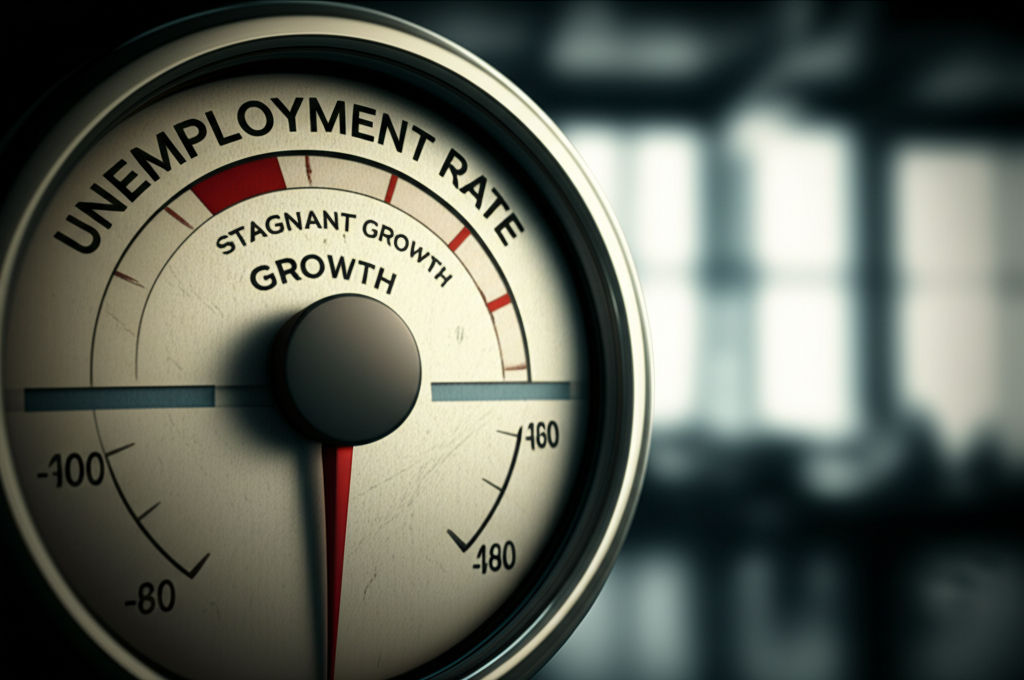Business Cycles: Upswings and Downturns
Emily Willis

Photo: Business Cycles: Upswings and Downturns
Navigating the Economic Tides: A Guide to Business Cycles, Upswings, and Downturns
The economy, much like the ocean, moves in predictable yet often volatile waves. These "waves" are known as business cycles or economic cycles, a fundamental concept that impacts everyone, from individual consumers to multinational corporations. Understanding these recurrent fluctuations – the exhilarating upswings and the challenging downturns – is not just for economists; it's a crucial tool for making informed financial decisions, building resilience, and seizing opportunities.
Far from being random events, business cycles are a natural rhythm of market economies, driven by a complex interplay of factors. While their timing and intensity can vary, the underlying pattern of expansion and contraction is a consistent feature of economic life. By delving into the mechanics of these cycles, we can better prepare for what lies ahead, turning potential vulnerabilities into strategic advantages.
Understanding the Rhythm of the Economy: What Are Business Cycles?
At its core, a business cycle refers to the fluctuation of economic activity between periods of expansion and contraction. Think of it as the economy's heartbeat, with periods of strong growth (upswings) followed by periods of slowdown or decline (downturns), and then a recovery, repeating the pattern. These cycles affect broad measures of economic activity, including output, employment, income, and sales.
While often referred to as "cycles," it's important to note that they are not perfectly regular or predictable in their duration or intensity. Some expansions can last for many years, while others are shorter. Similarly, downturns can vary in their severity and length. However, the sequence of phases generally remains consistent.
The Four Phases of the Business Cycle
Economists typically identify four distinct phases within a business cycle: Expansion, Peak, Contraction, and Trough.
Expansion (Upswing)
This is the phase of economic growth and prosperity.
- Characteristics: During an expansion, the economy is growing rapidly. Gross Domestic Product (GDP) increases, unemployment rates fall, and consumer confidence strengthens, leading to increased spending and investment. Businesses experience rising profits and increased output. The flow of money through the economy is healthy, and the cost of money (interest rates) is typically lower.
- Examples: A period of sustained job creation, rising stock market values, and booming housing markets are all hallmarks of an expansionary phase.
Peak
The peak marks the zenith of economic activity.
- Characteristics: At the peak, the economy is operating at its maximum productive output. Unemployment is typically very low, and businesses may be running at full capacity. While this sounds ideal, the peak can also signal potential overheating, with the possibility of rising inflation as demand outstrips supply.
- Warning Signs: Signs that an economy is nearing its peak might include rapid price increases, wage inflation, and speculative bubbles in asset markets.
Contraction (Downturn/Recession)
Following the peak, the economy enters a period of decline.
- Characteristics: During a contraction, economic growth slows significantly, or even turns negative. GDP declines, unemployment rates rise, consumer and business confidence drops, and spending decreases. Businesses may experience decreasing profits and lower output.
- Recession Defined: A recession is commonly defined as two consecutive quarters of negative GDP growth. However, official declarations, such as those by the National Bureau of Economic Research (NBER) in the U.S., consider a broader range of factors, including real income, employment, industrial production, and wholesale-retail sales, to define a "significant decline in economic activity spread across the economy, lasting more than a few months."
- Examples: The 2008 financial crisis and the economic impact of the COVID-19 pandemic are recent examples of significant economic contractions and recessions.
Trough
The trough represents the lowest point of the economic downturn.
- Characteristics: At the trough, economic activity is at its lowest level. Unemployment is high, and consumer pessimism is widespread. However, this phase also marks the turning point where the seeds of recovery are sown, often due to corrective policies or the natural self-correction of the market.
- Depression vs. Recession: While "recession" describes a significant decline, a "depression" is a much more severe and prolonged period of economic contraction, characterized by widespread unemployment and major pauses in economic activity. The Great Depression of the 1930s is the most prominent historical example.
What Drives These Economic Swings? Key Factors Influencing Business Cycles
Business cycles are influenced by a multitude of interconnected factors, both internal (endogenous) and external (exogenous) to the economy.
- Interest Rates and Monetary Policy: Central banks, like the Federal Reserve in the U.S., play a crucial role by controlling interest rates and the money supply. Lower interest rates encourage borrowing and investment, stimulating expansion, while higher rates can cool an overheating economy to combat inflation.
- Consumer Spending and Confidence: Consumer spending is a significant driver of economic activity. When consumers are confident about the future, they tend to spend more, boosting demand. Conversely, pessimism can lead to reduced spending, exacerbating a downturn.
- Business Investment: Businesses invest in new equipment, technology, and facilities when they anticipate future growth. This investment drives innovation and creates jobs, fueling expansion. A decline in business investment can signal a contraction.
- Technological Innovation: Breakthroughs in technology can spur new industries, increase productivity, and create waves of economic growth. However, they can also disrupt existing industries, leading to structural changes and job displacement in the short term.
- Global Events: Geopolitical events, pandemics, natural disasters, and shifts in international trade dynamics can all have a significant impact on national and global economies. For instance, supply chain shocks can lead to inflation and reduced output.
- Government Fiscal Policy: Government spending and taxation policies (fiscal policy) are powerful tools that can influence the business cycle. During a downturn, increased public spending or tax cuts can stimulate demand, while during an expansion, policies might aim to temper growth to prevent inflation.
Navigating the Waves: Strategies for Individuals and Businesses
Understanding business cycles is not merely an academic exercise; it provides actionable insights for both individuals and businesses to build resilience and even thrive through economic shifts.
For Individuals: Building Personal Economic Resilience
- Build a Robust Emergency Fund: This is paramount. Aim for at least 3-6 months of living expenses, ideally more, to cover essential costs during periods of job uncertainty or reduced income.
- Diversify Investments: Don't put all your eggs in one basket. A diversified investment portfolio across different asset classes (stocks, bonds, real estate, etc.) can help mitigate risk during market volatility. Consider consulting a financial advisor for personalized guidance.
- Prioritize Debt Management: Pay down high-interest debt during periods of prosperity. This frees up cash flow and reduces financial strain during a downturn.
- Invest in Your Skills and Career: Continuously learning new skills and adapting to market demands can enhance your career resilience and employability, even during economic contractions.
- Maintain Financial Hygiene: Diligent budgeting, identifying unnecessary expenses, and delaying major purchases during uncertain times can significantly improve your financial stability.
For Businesses: Strategies for Sustainable Growth and Survival
- Strengthen Cash Reserves and Cash Flow: Just like individuals, businesses need strong cash reserves to weather slow periods. Prioritize cash flow management by monitoring funds, tightening accounts receivable, and negotiating favorable payment terms with suppliers.
- Diversify Revenue Streams: Relying on a single product, service, or customer base can be risky. Explore complementary offerings, new markets, or digital solutions to broaden your income sources.
- Optimize Operational Costs: Regularly evaluate and cut unnecessary expenses without sacrificing quality or essential functions. Focus on efficiency and lean operations.
- Invest in Innovation and Technology: Even during downturns, strategic investment in innovation can create a competitive advantage and position your business for future growth.
- Maintain Strong Customer Relationships: Loyal customers are invaluable during challenging times. Focus on exceptional service, personalized experiences, and consistent communication to strengthen these bonds.
- Be Agile and Adaptable: The ability to quickly pivot strategies, adjust business models, and respond to changing market conditions is crucial for navigating economic shifts.
- Proactive Planning: Many successful businesses begin planning for a potential downturn as soon as indicators suggest a slowdown. This includes scenario planning and stress-testing financial models.
Recognizing the Signals: Key Economic Indicators to Watch
Staying informed about key economic indicators can provide
Latest ✨
View Allimpact of inflation on households and businesses, outlining the causes and consequences of rising prices. It provides strategies for both households and businesses to cope with inflation, such as budgeting, seeking deals, and negotiating with suppliers. The importance of collaboration and communication between governments, businesses, and consumers is emphasized, along with the need for long-term investments in infrastructure, skills development, and sustainable practices.
Emily Willis
Meta Description: Discover the top skills junior software developers need to master in 2024 to excel in their careers. From coding languages to soft skills, this blog reveals the secrets to staying ahead in the dynamic world of software development.
Emily Willis
Senior secured financing explained: benefits, types, tips, and real-world examples to help businesses access low-risk, asset-backed capital solutions.
Emily Willis
Explore the vital role of financial regulators, the unsung heroes who protect your savings, prevent crises, and ensure a stable, thriving economy.
Emily Willis
Business
View All
June 9, 2025
Find Your Next Great Business IdeaUnlock your next great business idea! Learn a structured process to discover, evaluate, and refine entrepreneurial opportunities for real-world success.
Emily Willis

June 8, 2025
SEO Strategy to Rank Higher (2025)Master SEO in 2025! Discover essential strategies for user experience, AI, and E-A-T to rank higher and capture organic traffic.
Emily Willis

June 8, 2025
Agile Project Management for ResultsAgile project management: an iterative, flexible approach delivering continuous value & achieving tangible business outcomes through customer feedback.
Emily Willis
Economy
View AllGlobalization has a profound impact on the economies of developing countries, offering both opportunities and challenges. By increasing access to markets, facilitating technology transfer, creating jobs, and promoting cultural exchange, globalization can drive economic growth and development. However, addressing the challenges of economic inequality, loss of domestic industries, environmental impact, and cultural homogenization is essential to ensure sustainable and inclusive growth. By adopting strategic measures and fostering international cooperation, developing countries can maximize the benefits of globalization and build a brighter future
Read MoreNavigate financial markets confidently! This guide demystifies risk management, helping you protect investments, enhance stability, and secure your financial fu...
Read MoreDemystify the unemployment rate. Learn what it signifies, how it's measured, and why this economic barometer impacts your daily life.
Read MoreEntertainment
View All
August 4, 2024
The Future of Cinema: Trends in Film Production, Distribution, and Audience Engagementthe ever-evolving landscape of cinema, driven by technological advancements, changing audience preferences and innovative storytelling approaches. The exhibition explores trends such as digital filmmaking, virtual production, the dominance of streaming services, hybrid release models, and the revitalization of cinemas.
Emily Willis

August 5, 2024
Music's Evolving Landscape: Technology, Social Media, and Global TrendsThe music industry has undergone significant changes due to technological advancements, social media, and a growing global audience. The shift from analog to digital formats, the rise of streaming services, and the impact of social media on artist-fan relationships are explored.
Emily Willis

August 5, 2024
Fandom's Power: Passionate Communities and Cultural ImpactFandoms are dedicated groups of fans who come together around a shared love for a book series, movie franchise, or other interest. They provide a sense of belonging and community for individuals, particularly those who may feel like outsiders in their everyday lives.
Emily Willis
Health
View Allour minds are often overwhelmed with information and stimuli, leading to stress and anxiety. Mindfulness and meditation offer tools to cultivate inner peace and well-being. Mindfulness involves being present in the moment without judgment, while meditation involves focusing attention on an object or thought.
Emily Willis
Regular exercise is essential for maintaining both physical and mental health. It helps with weight management, cardiovascular health, muscle strength, energy levels, and sleep quality. Exercise also reduces stress and anxiety, improves mood, cognitive function, and self-esteem, and lowers the risk of depression. Different types of exercises, such as aerobic, strength training, flexibility, balance, and mind-body exercises, contribute to overall health. To start and maintain an exercise routine, it is important to start slowly, set realistic goals, find enjoyable activities, stay consistent, and listen to your body.
Emily Willis
Heart disease is a leading cause of death globally, but early detection and prevention strategies can reduce its impact. This article discusses the importance of early detection, common risk factors, preventive measures, and lifestyle changes for heart health. Understanding heart disease, recognizing symptoms, and undergoing regular screenings are crucial. Common risk factors include high blood pressure, high cholesterol, diabetes, smoking, obesity, physical inactivity, and family history. Symptoms of heart disease include chest pain, shortness of breath, fatigue, irregular heartbeat, and swelling. Diagnostic tests and screenings include blood pressure measurement, cholesterol screening, blood glucose test, ECG, stress test, and imaging tests. Preventive measures include adopting a heart-healthy diet, regular physical activity, quitting smoking, managing stress, maintaining a healthy weight, and limiting alcohol consumption. Medications and treatment options may be necessary for individuals at high risk or diagnosed with heart disease.
Emily Willis
Trending 🔥
View All
1
2
3
4
5
6
7
8
9
Lifestyle


Sports
View AllAugust 5, 2024
Sportsmanship in the Spotlight: Cultivating Respect, Integrity, and Ethical Behavior
Read MoreAugust 5, 2024
The Future of Sports: Anticipating Trends, Embracing Innovation, Shaping a New Era
Read MoreTechnology
View All
August 5, 2024
What is Blockchain and How does it Work?
Blockchain technology is a decentralized digital ledger that records transactions securely and transparently across multiple computers. Key concepts include decentralization, cryptographic security, and consensus mechanisms. Transactions are verified, grouped into blocks, and added to the blockchain through a consensus process.

August 5, 2024
Top 5 VR Headsets for PC Gaming in 2024
Discover the top 5 VR headsets for PC gaming in 2024! Immerse yourself in stunning visuals, immersive audio, and intuitive controls with these powerful VR devices. From high-end options to budget-friendly alternatives, we've got you covered on your journey to the ultimate VR experience.

August 5, 2024
AI Trend Predictions for 2024 and beyond
AI is no longer a futuristic concept, it is shaping our world at an unprecedented pace. In 2024 and beyond, AI trends are likely to dominate in various industries. Generative AI is expected to revolutionize content creation, design, and product development. In healthcare, AI will lead to personalized medicine, drug discovery acceleration, improved diagnostics, and remote patient monitoring.

August 5, 2024
Best AR Apps for Interior Design
Discover the top AR apps for interior design and transform your space with ease! From furniture placement to paint colors, these innovative tools will revolutionize the way you decorate, making your home design dreams a reality



















